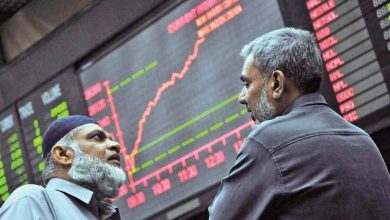SBP projects 2.5%-3.5% GDP growth in FY25

Pakistan’s economy is projected to maintain its momentum with the industrial and services sectors showing recovery in the current fiscal year (FY2024-25). However, the growth is expected to lose the support of the agriculture sector, which was the primary driver of the economy in the previous fiscal year (FY2023-24).
In its Annual Report on the State of Pakistan’s Economy for FY2023-24, the State Bank of Pakistan (SBP) stated, “The latest information about kharif (summer) crops suggests that the agriculture sector may not sustain its growth momentum into FY25.”
According to preliminary estimates as of September 1, 2024, cotton arrivals reported a 59.7% decline compared to the same period last year, the report added.
The SBP highlighted that “the latest data on high-frequency indicators points to further improvement in macroeconomic conditions in FY25.” The real GDP growth is expected to fall within the range of 2.5% to 3.5% in FY25, compared to 2.5% growth in FY24. The central bank also projected that workers’ remittances would increase to $32-33 billion in the current fiscal year, up from $30.25 billion in the previous year.
This, along with the approval of the Extended Fund Facility (EFF) by the International Monetary Fund (IMF) Board in September 2024, is expected to boost investor confidence and upgrade Pakistan’s credit rating, potentially leading to external inflows from both multilateral creditors and private investors. Global commodity prices are maintaining a downtrend, while global growth is expected to remain steady, according to the IMF’s latest World Economic Outlook. These developments have improved Pakistan’s near-term macroeconomic outlook. However, the SBP warned that “inherent volatility in global energy prices may pose some risks to this outlook.”
The central bank noted that, in line with the moderate expansion in the industrial and services sectors, “imports are likely to increase in FY25.” While rising geopolitical tensions present upside risks to global commodity prices, the SBP observed that prices remain relatively low. Both exports and workers’ remittances continue to hold the positive trends seen in FY24.
Considering these trends, the SBP expects the current account deficit (CAD) to remain contained within 0-1% of GDP in FY25. Additionally, the approval of the $7 billion EFF programme and expected external inflows from multilateral and bilateral creditors are likely to strengthen external buffers.
The SBP has reduced its policy rate by 4.5 percentage points to 17.5%, lowering borrowing costs. This, combined with an improved external position and falling global commodity prices, is expected to support the expansion of the industrial and services sectors in FY25.
Meanwhile, the FY25 budget envisages a significant increase in development spending, which may further stimulate economic activity. “High-frequency demand indicators also continue to show signs of ‘bottoming out,’ with large-scale manufacturing witnessing consistent improvement since December 2023,” the report stated.
Despite the reduction in the policy rate, real interest rates remain significantly positive. The tight monetary policy and continued fiscal consolidation, as outlined in the FY25 budget, are expected to keep inflation in check. The headline inflation has maintained a general downtrend since June 2023, dropping to 6.9% in September 2024. Core inflation has also seen a significant decline in recent months.
“In light of recent trends, average inflation in FY25 may fall below the earlier projected range of 11.5% to 13.5%,” the SBP noted. However, it cautioned that volatility in international oil prices, fiscal slippages, and unplanned subsidies pose significant risks to this projection.
Macroeconomic conditions improved during FY24, supported by stabilisation policies, successful engagement with the IMF, and declining global commodity prices. “Real economic activity rebounded, led by agriculture, while inflation dropped significantly, particularly in the second half of the year.”
The CAD narrowed further, and financial inflows improved, leading to a buildup of forex reserves and reducing pressure on the rupee. Fiscal consolidation continued, with the primary balance posting a surplus for the first time in 17 years, contributing to a reduction in the debt-to-GDP ratio in FY24.
Despite these developments, the report highlights that several structural challenges continue to hinder sustained macroeconomic stability. These include falling investment, low savings, an unfavourable business environment, a lack of R&Dresearch and development, and low productivity. Climate change risks and longstanding inefficiencies in the energy sector, including of circular debt, also remain significant obstacles.




